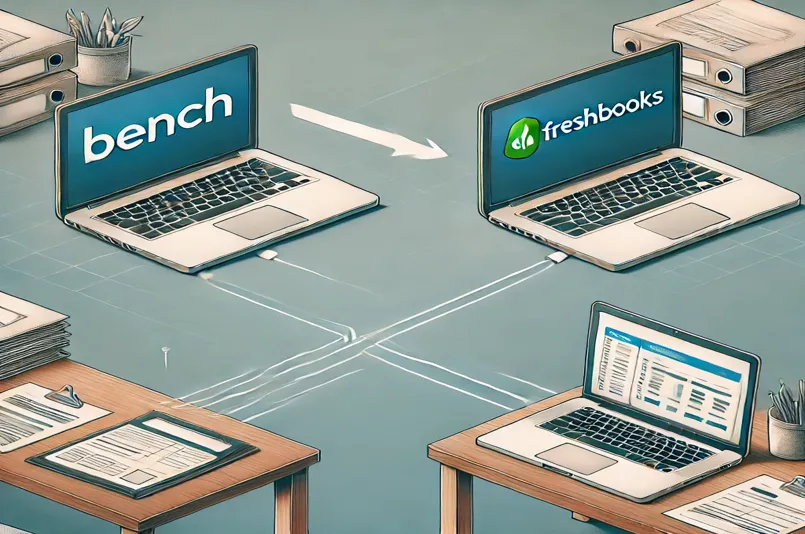Migrate from Bench to FreshBooks – 5 Easy Steps

How to Migrate from Bench to FreshBooks
Switching bookkeeping platforms can feel overwhelming, especially when transitioning from a service like Bench to FreshBooks. With Bench ceasing operations on December 27, 2024, and data access available only until March 31, 2025, now is the perfect time to ensure a seamless migration. This guide walks you through the steps to successfully switch to FreshBooks and maintain accurate financial records.
Table of Contents
- Why Choose FreshBooks?
- Preparing for the Migration
- Step-by-Step Migration Process
- Best Practices After Migration
- Final Thoughts
Why Choose FreshBooks?
FreshBooks is an excellent alternative for small business owners and freelancers. Its user-friendly interface, robust features, and automation capabilities make it a top choice for those transitioning from Bench.
Key Benefits:
- Intuitive invoicing and payment tracking.
- Integration with over 100 third-party apps.
- Time-tracking features for billing accuracy.
Discover more on our FreshBooks bookkeeping page.
Preparing for the Migration
1. Backup Your Bench Data
Before starting the migration, ensure all your financial data from Bench is downloaded. Focus on the following:
- Transaction history
- Reports (Profit & Loss, Balance Sheet)
- Tax filings and receipts
2. Assess Your Business Needs
Determine the specific FreshBooks features you’ll utilize, such as invoicing, expense tracking, or time tracking.
3. Set Up FreshBooks
Create a FreshBooks account and configure your business details, such as:
- Company name and address.
- Payment gateway integrations.
- Invoice templates.
Step-by-Step Migration Process
Step 1: Export Data from Bench
Log into your Bench account and export your data into a CSV format. Focus on:
- Transactions
- Categorized expenses
- Reconciled bank statements
Step 2: Import Data into FreshBooks
FreshBooks allows you to upload CSV files for transactions. Navigate to:
- Settings > Import Data
- Select the appropriate categories (e.g., expenses, invoices).
- Map Bench data fields to FreshBooks equivalents.
Step 3: Reconcile Accounts
Cross-check transactions and ensure all imported data aligns with your bank statements. Use FreshBooks’ reconciliation tool for accuracy.
Step 4: Invite Team Members
Grant access to accountants or employees who will manage your FreshBooks account.
Best Practices After Migration
1. Run a Test Period
Before fully relying on FreshBooks, test it for a month alongside your Bench data. Verify that all functionalities meet your expectations.
2. Utilize FreshBooks Automation
Take advantage of automated reminders for invoices, recurring billing, and expense tracking to streamline workflows.
3. Monitor Financial Reports
Regularly generate reports to ensure your data integrity and financial accuracy during and after the transition.
Final Thoughts
Migrating from Bench to FreshBooks doesn’t have to be complicated. With proper preparation and the right tools, you can achieve a smooth transition that supports your bookkeeping needs. Start your FreshBooks journey today to unlock simplified, efficient accounting.
If you have any questions or need additional support, check out our FreshBooks bookkeeping services. Our expert team is here to assist with your bookkeeping transition to FreshBooks, ensuring a smooth and stress-free experience tailored to your needs.
Maxim Liberty has been providing outsourced bookkeeping services to businesses and accounting firms in the USA and Canada since 2005.
